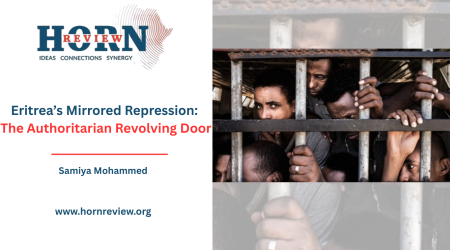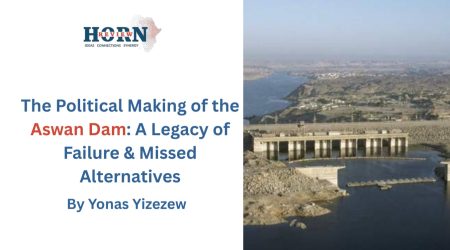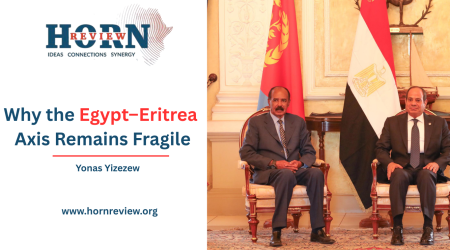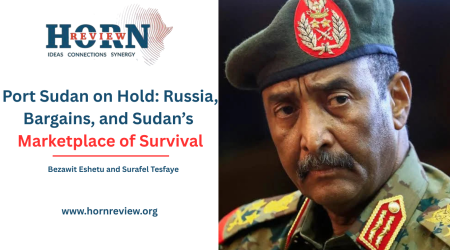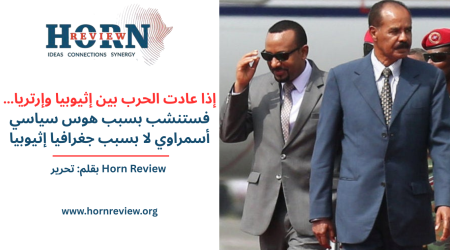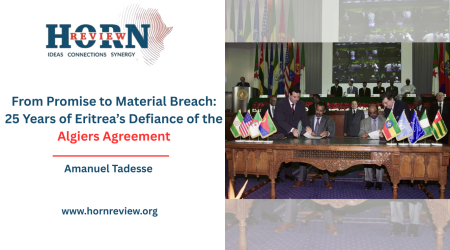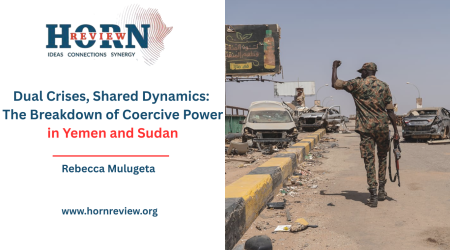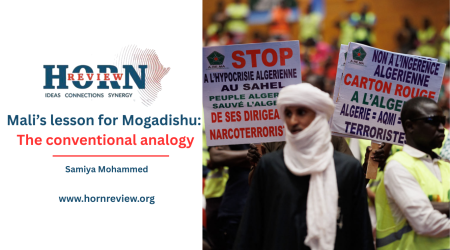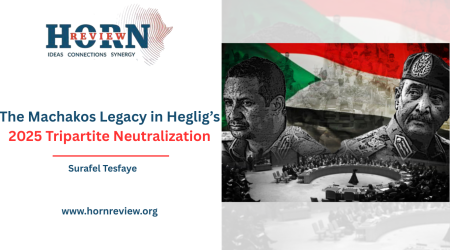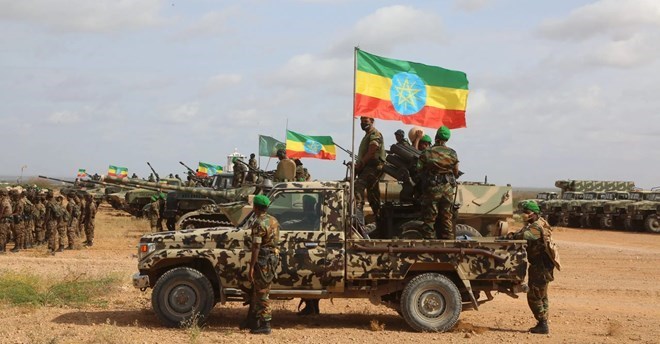
25
Jul
Hybrid Insurgency to Quasi-State: Ethiopia’s Role in Containing an al-Shabab-Led Somalia
The decades following the collapse of Siad Barre’s regime in 1991 witnessed a full-scale breakdown of centralized governance throughout Somalia. Afterwards, Somalia has languished under a persistent cycle of violence, political fragmentation, and social upheaval. In this context of enduring disorder, the al Qaeda-linked militant organization al Shabab has come to dominate the landscape of armed conflict. Originally concentrating its operations within Somalia’s borders, the group has, over the last several years, extended its reach beyond national frontiers exporting its campaign of terror into neighboring states and thereby transforming a once localized insurgency into a regional security threat.
Beginning in 2008, as Al-Shabaab started to rapidly capture territory, it pursued the establishment of civil-governing mechanisms in areas it controlled. These mechanisms and institutions included a judiciary, police force (the Jaysh al-Hisba), a military wing (the Jaysh al-Usra), and offices of taxation, political affairs and clan relations, education, religious affairs and missionary propagation (daʿwa). Alongside its domestically rooted identity, Al-Shabaab also has a transnational, globalist aspect to its organizational identity and is an official affiliate of al-Qaeda. Its leadership having pledged allegiance to the group publicly in 2012, an oath accepted by al-Qaeda chief Ayman al-Zawahiri.
This deliberate construction of governance structures served dual purposes. Internally, it allowed al Shabab to legitimize its control, presenting a veneer of order where official state institutions were absent. By adjudicating disputes through its own courts and imposing fines, the group earned a reluctant acquiescence from some local populations. Externally, these quasi-governmental trappings complicated international efforts to isolate the movement, as Western donors found themselves debating whether engagement with community leaders amounted to indirect dealings with an extremist entity. Al-Shabaab’s tactical evolution demonstrates its adaptability. It operates as a sophisticated hybrid organization, exhibiting characteristics of a terrorist group, an insurgent force, and a quasi-state actor in areas under its control.
The group has long been interested in exporting its brand of Islamist extremism to neighboring countries. In 2010, the organization carried out a deadly attack in Uganda, has since maintained a significant influence in Kenya, and for many years endeavored albeit unsuccessfully to establish operations in Ethiopia. These external operations serve multiple strategic ends. First, they punish states that directly challenge al Shabab’s territorial ambitions, deterring further incursions into Somali soil. Second, by striking beyond Somalia’s borders, the group projects an aura of reach and potency that amplifies its propaganda value.
Not only has it remained active, but it has also managed to take up the fight against African Union troops and security forces in Somalia for almost two decades now. The counter-Al-Shabaab effort is further complicated by competing national interests and geopolitical rivalries among regional and international actors, notably Egypt’s growing military and diplomatic presence in Somalia, driven by its competition with Ethiopia over Nile water resources. The ongoing drawdown of the African Union Support and Stabilization Mission in Somalia (AUSSOM) combined with the Federal Government of Somalia’s (FGS) limited capabilities, creates a high-risk environment ripe for exploitation by Al-Shabaab, causing an advancement of the group’s territorial reach.
Egypt’s engagement in Somalia, while ostensibly framed as support for stabilization, carries strategic undercurrents related to the GERD negotiations. By cultivating ties with Mogadishu through arms transfers and infrastructural grants, Cairo seeks to leverage Somali goodwill in broader Eastern African diplomatic forums. This development complicates collaborative counter-terrorism efforts and effectively diminishes recognition of Ethiopia’s longstanding and pivotal role in deterring the group over many years.
Worse still, in late 2024, political fault lines have emerged: Somalia’s federal government has signaled reluctance to host Ethiopian contingents, citing Ethiopia’s MoU with Somaliland, as part of AUSSOM, leaving Addis Ababa on the sidelines of a mission it once helped sustain. This decision has strained relations with federal member states like Jubaland and South-West State, which rely on Ethiopian forces to counter Al-Shabaab, even though the government accepts later.
Ethiopia’s national security is inextricably linked to the stability of Somalia. A stable and sovereign Somalia underpins Ethiopia’s frontier security, containing extremist ideologies and cross-border terrorism before they can spill into its territory. Ethiopia has sustained a decades-long security presence in Somalia, driven by the imperative to secure its porous boundaries and deny militant groups safe havens within reach of its border regions. This historical commitment showcases the consistent and non-negotiable nature of this national interest for Ethiopia, irrespective of the specific government in power.
This arrangement encompasses more than the simple delineation of territory. It encompasses the creation of reliable local partners who can manage day-to-day security, gathering actionable intelligence on insurgent movements, and enabling rapid response to emerging threats. Ethiopian support for Jubaland’s security forces, for example, included training in urban policing, provision of light armored vehicles, and shared command-and-control platforms. These investments aimed not only to repel al Shabab raids but to institutionalize a chain of trust between federal and regional authorities, a trust that has frayed amid federal-Somaliland tensions.
The hypothetical scenario of Al-Shabaab coming to power, however remote that scenario is, carries profound and far-reaching consequences for Somalia itself, Ethiopia, and the wider Horn of Africa region. While Al-Shabaab might initially consolidate control, it would face internal resistance from various clans and factions unwilling to accept its brutal rule. It would transform Somalia into a jihadi enclave, emboldening transnational terror networks, imperiling the Red Sea‐Gulf of Aden trade lifeline, and destabilizing the wider Horn. Such an outcome would likely trigger mass displacement and inflame radicalization in peripheral regions.
In practical terms, an al Shabab-led administration would revoke current counter-terrorism agreements with Western and regional partners, expel humanitarian agencies, and abrogate ceasefire accords. It would harness state resources, ports, airlines, telecommunications, to fund extremist training camps and forge alliances with like-minded jihadist factions.
For Ethiopia, Al-Shabaab’s ascent to power would constitute a direct and severe threat. The security perimeter Ethiopia has long sought to maintain would cease to exist as a passive barrier and would instead become a direct frontline. Al-Shabaab would likely intensify cross-border attacks, seeking to destabilize Ethiopia and other border areas. This would demand a significantly more robust and costly Ethiopian military posture along its extensive border with Somalia.
Beyond border security, Ethiopia’s internal stability would be jeopardized. There would be an increased risk of radicalization among Ethiopian youth and Al-Shabaab could exploit existing ethnic and religious fault lines within Ethiopia to sow discord. Economically, Al-Shabaab’s control of key areas, particularly ports, could disrupt vital trade routes through Somalia, impacting Ethiopia’s access to maritime commerce. Ethiopia’s security calculus would be immediately upended: checkpoints along the Jijiga-Darkhad corridor would become frontline positions, refugee flows into the Somali Region would surge. Furthermore, the heightened security threat would necessitate increased defense spending, diverting crucial resources from Ethiopia’s development agenda.
Ethiopia’s response must be rooted in pragmatism and calibrated to its capacities. Drawing on experiences from the 2006–2009 EPRDF interventions, Addis Ababa could reinvigorate human intelligence networks within Somali clans, embed liaison officers with AUSSOM and Danab units (i.e., Somalia’s elite special police commando forces trained by international partners), and support vetted local militias to create layered deterrence. Enhanced border surveillance, including UAV deployments, joint patrols with Kenyan forces, and a revitalized intelligence-sharing framework under a Horn of Africa security pact, would further fortify Ethiopia’s frontier.
Concretely, Ethiopia should dispatch specialized teams to Jubaland to retrain popular militias. It should also invest in low-cost drone platforms for persistent monitoring of flashpoints, as it has a drone manufacturing industry. On the intelligence front, expanding scholarship programs at Ethiopia’s National Intelligence and Security Service for Somali-speaking graduates would build a cadre capable of nuanced clan liaison work. These elements, combined with expanded airlift capacity for rapid reinforcement, would construct a deterrent posture that is affordable, scalable, and responsive. Most importantly, infiltrating al-Shabab’s intelligence unit ‘Amniyat’ should be given priority, as its resurgence is intrinsically linked to the effective management of the service.
By Yonas Yizezew,Researcher,Horn Review

